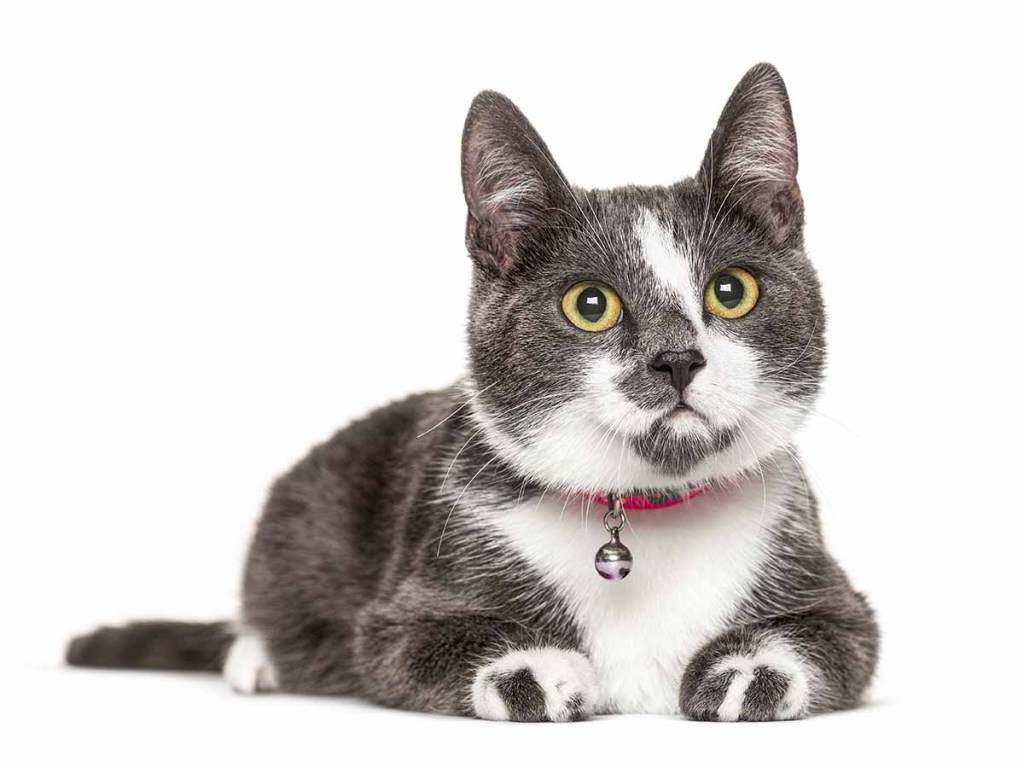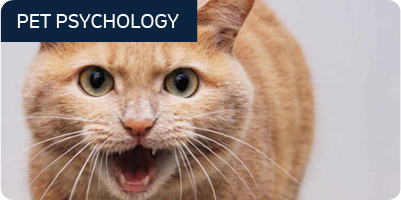
MEOW! Cats in translation
Seven behaviors that show your feline is totally into you … or not
Experts believe cats were domesticated in ancient Egypt and possibly before1. People have been trying to understand and explain cat behavior ever since. While they are quite mysterious to this day, we now understand a few things that can help you understand your kitty’s behavior:
Blinking and holding eye contact
When it comes to communication, humans rely heavily on verbal cues, facial expressions, and body language to convey their thoughts and emotions. We exchange a great deal of information simply by looking at one another. Cats possess the same ability to express themselves through eye contact.
From a cat’s point of view, direct eye contact is used to assess threats and establish dominance.2 Some cats may perceive direct eye contact from humans as threatening.3 Blinking serves as a “break” in what would otherwise be an aggressive stare. Long slow blinking indicates he is relaxed.3 If you’re concerned that your cat’s lack of eye contact means he doesn’t like you, don’t worry — he sees you from the corner of his eye. Cats have incredible peripheral vision.3 The less he has to focus on you, the more he trusts you!
Purring
Cats purr for a variety of reasons and it’s largely situational — similar to human laughter. Just as we laugh at things that surprise us, delight us, or scare us, cats purr when they’re happy, hungry, frightened, or injured. It can also be a means of expression or self-soothing.
Purring may be associated with positive situations because it occurs when a cat is friendly, relaxed, grooming, or caretaking. Your best insights into why your cat purrs come from observing what precipitated her purr.
Kneading and rubbing on you
Any way you look at it your cat’s kneading habit is a positive signal4. Kittens knead their mother to encourage milk production and, because of this, cats associate the action of kneading with comfort.4 Felines have scent glands inside the pads on the bottom of their paws and knead to express their scent and mark their territory.4
Kneading is also an attempt to make a comfy spot out of your bumpy lap! Other types of marking behaviors include rubbing against you and head bumping. When your kitty kneads or rubs against you, it’s the finest form of feline love. She’s marking you as her human.
Bringing you presents
Everyone relishes the opportunity to give a heartfelt gift. Our feline friends are no different. For cats, giving a present lets them express their affection for us and offers them a chance to use their hunting abilities. Cats have a natural hunting instinct that is difficult to reduce, unlike dogs.5 Cats possess incredible hunting skills, which they begin practicing while playing from a young age.5 Even without kittens, female housecats may still exhibit maternal behavior instinctively.6 This means that as their beloved human, you are the recipient of their maternal instinct. But, if your beloved kitty tries to “feed” you, it’s ok not to finish your dinner.
Following you around
Cats are very independent creatures. They prefer to complete most personal feline tasks alone. They like to eat alone, use their litter box in private and curl up for a nap in a favorite hiding spot. The need for privacy is driven by your cat’s attempt to control her territory and maintain safety.7 Though it might be your home, it’s his territory, and he’s very curious about the entire goings-on. He needs to be in the know just to be sure that you are not unwittingly attracting unwelcome predators into HIS territory.
The straight-up tail and belly up
Your cat’s straight-up tail is her way of waving a flag to welcome you home. This behavior can be seen in kittens and elder cats alike. The “up-tail” is also a greeting to other friendly felines and an acknowledgment of status. The straighter the tail, the more deference she is offering.2 By showing an up-tail, your cat is exposing the hardest part of her to defend: all that’s behind her.
Belly exposure is a highly vulnerable posture that proclaims your cat’s high level of trust in you.8 When showing you her fluffy, furry belly a kitty is saying, “I trust you, my human.” But don’t be mistaken. She’s probably NOT looking for a belly rub — more likely, she’s just showing her love for you.
REFERENCES:
- Pappas, Stephanie. Ancient Egyptian Kitten Skeletons Hint at Cat Domestication. Live Science. 2014.
- Aggression in Cats. ASPCA. https://www.aspca.org/pet-care/cat-care/common-cat-behavior-issues/aggression-cats
- Humphrey T., Proops L., Forman J., Spooner R., McComb K., (2020). The role of cat eye narrowing movements in cat–human communication. Scientific Reports, 10(16503). https://doi.org/10.1038/s41598-020-73426-0
- American Animal Hospital Association. https://www.aaha.org/your-pet/pet-owner-education/ask-aaha/is-my-cats-kneading-normal/
- Roldan J., Otranto D., (2023). Zoonotic parasites associated with predation by dogs and cats. Parasites & Vectors, 16(55). https://doi.org/10.1186/s13071-023-05670-y
- Maternal Behavior Problems in Cats. Wag. https://wagwalking.com/cat/condition/maternal-behavior-problems
- The Social Structure of Cat Life. International Cat Care. https://icatcare.org/advice/the-social-structure-of-cat-life/
- 20 Cat Sleeping Positions and What They Mean. PetMD. https://www.petmd.com/cat/general-health/cat-sleeping-positions-and-what-they-mean
More like this
- Understanding cat aggression
 Find out why your cats are being aggressive and how to help them get along.
Find out why your cats are being aggressive and how to help them get along. - See the world through your dog’s eyes
 Get a dog’s-eye view by understanding how your dog sees differently than you
Get a dog’s-eye view by understanding how your dog sees differently than you - How to keep your pet entertained while you’re away
 Tips and tricks to keep your dog or cat from getting lonely – and mischievous – while you’re gone
Tips and tricks to keep your dog or cat from getting lonely – and mischievous – while you’re gone




